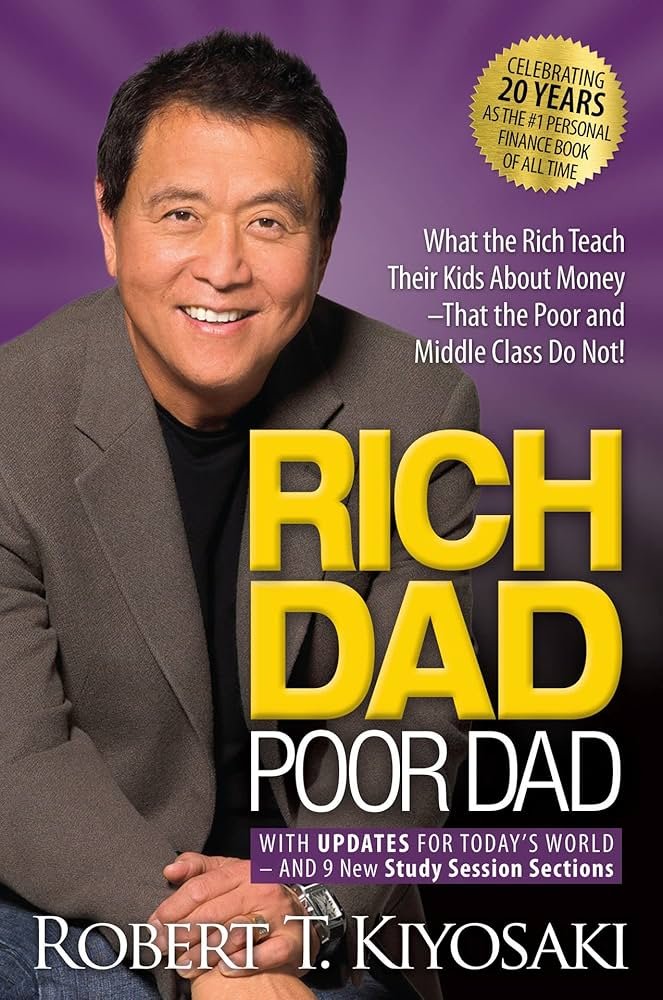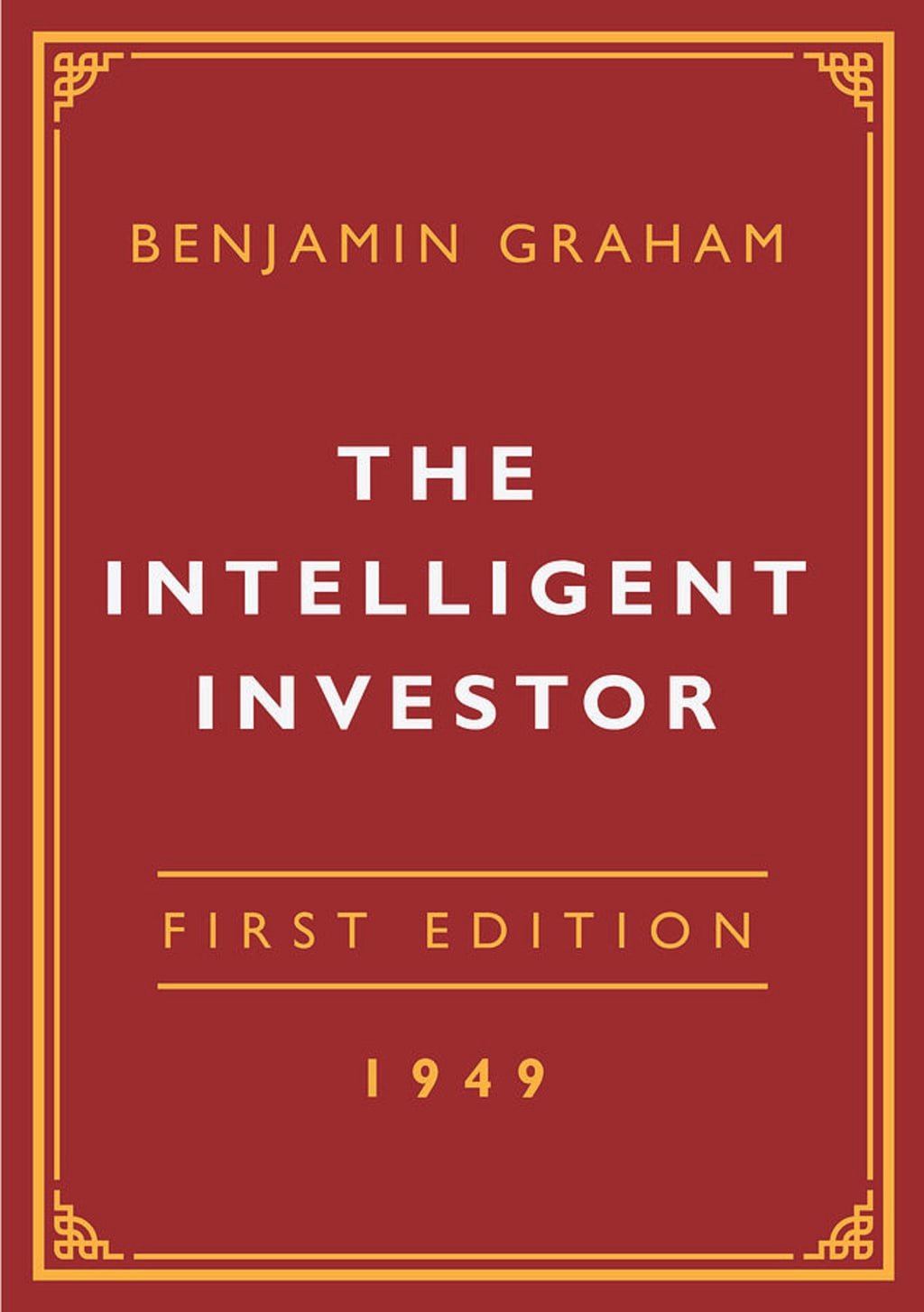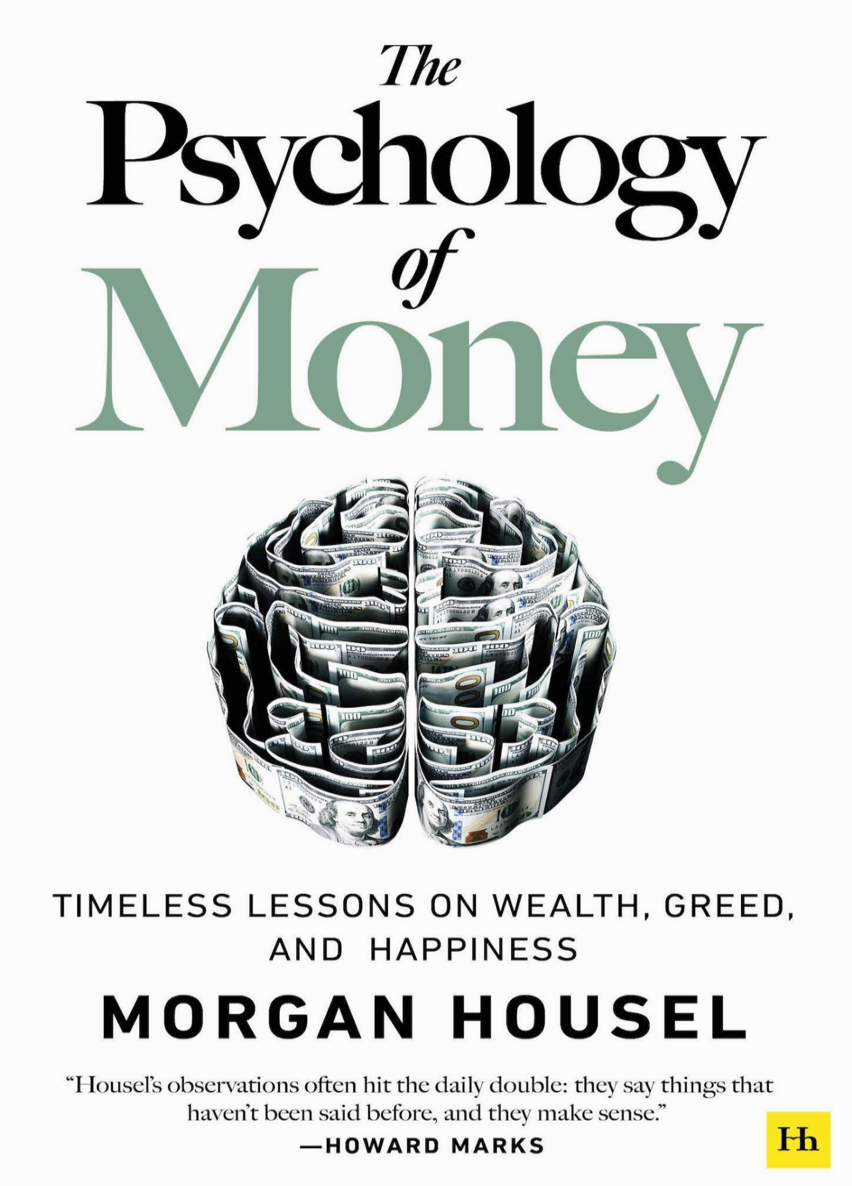
1. Introduction: The Two Dads, Two Mindsets
Robert Kiyosaki’s Rich Dad Poor Dad is structured around the contrasting financial philosophies of his “two dads.”
- Poor Dad: His biological father, a well-educated man with a stable government job, who believed in traditional education and working for a paycheck.
- Rich Dad: His best friend’s father, a successful entrepreneur, who taught him about money, investing, and building wealth.
The book’s central premise is that the way we think about money—our financial mindset—determines our financial destiny. Kiyosaki’s two dads represent the two dominant mindsets about money in society.
2. The Importance of Financial Education
Kiyosaki argues that schools teach academic and professional skills, but not financial literacy.
- Financial education is the foundation of wealth.
- The lack of financial education leads to poor money management, debt, and a lifetime of working for money rather than making money work for you.
He urges readers to take responsibility for their own financial education, regardless of their background or formal schooling.
3. The Core Principle: Assets vs. Liabilities
One of the book’s most powerful lessons is the distinction between assets and liabilities.
- Assets: Put money in your pocket (e.g., rental properties, stocks, businesses, intellectual property).
- Liabilities: Take money out of your pocket (e.g., mortgages, car loans, credit card debt, expensive consumer goods).
Rich Dad’s advice:
- Focus on acquiring assets and minimizing liabilities.
- The rich buy assets; the poor and middle class acquire liabilities they think are assets (like a bigger house or a new car).
Kiyosaki provides a simple test:
“An asset is something that puts money in my pocket. A liability is something that takes money out of my pocket.”
4. The Rat Race and Escaping It
Kiyosaki describes the “rat race” as the endless cycle of working for a paycheck, paying bills, and never achieving financial freedom.
- Most people work hard, earn more, and then spend more, increasing their liabilities.
- They become trapped by their jobs, debts, and expenses.
Escaping the rat race requires:
- Building a portfolio of income-generating assets.
- Developing financial intelligence to spot opportunities and manage risks.
- Shifting from an employee mindset to an investor/entrepreneur mindset.
5. The Power of Entrepreneurship
Kiyosaki’s Rich Dad encourages entrepreneurship as a path to wealth.
- Employees work for money and security.
- Entrepreneurs and investors create systems and assets that generate income, even when they’re not working.
He doesn’t suggest everyone must start a business, but he emphasizes the importance of thinking like an owner, not just a worker.
6. Making Money Work for You
A central theme is the idea of making money work for you, rather than working for money.
- The rich invest in assets that generate passive income.
- They use their money to buy or build income streams (real estate, stocks, businesses).
- They reinvest profits to grow their wealth.
Kiyosaki stresses the importance of financial leverage—using other people’s money, time, and expertise to build wealth.
7. The Value of Taking Risks and Learning from Failure
Kiyosaki challenges the conventional wisdom that security is the highest goal.
- The poor and middle class are taught to avoid risks and seek job security.
- The rich learn to manage risks and see failure as a learning opportunity.
He encourages readers to:
- Embrace mistakes as part of the learning process.
- Take calculated risks.
- Develop resilience and adaptability.
8. The Importance of Mindset
Mindset is a recurring theme throughout the book.
- Poor Dad’s mindset: “I can’t afford it.”
- Rich Dad’s mindset: “How can I afford it?”
Kiyosaki argues that the questions we ask ourselves shape our thinking and actions.
- The rich ask empowering questions and seek solutions.
- The poor accept limitations and avoid challenges.
9. The Four Quadrants of Income
In his later book (Cashflow Quadrant), Kiyosaki expands on the four ways people earn income:
- Employee: Works for someone else.
- Self-employed: Owns a job (doctor, lawyer, freelancer).
- Business owner: Owns a system or business.
- Investor: Money works for them.
Rich Dad Poor Dad introduces this concept, encouraging readers to move from the left side (E and S) to the right side (B and I) for greater financial freedom.
10. The Role of Taxes and Corporations
Kiyosaki explains how the rich use corporations and tax strategies to protect and grow their wealth.
- Corporations offer tax advantages and liability protection.
- The rich earn, spend, and then pay taxes; the poor and middle class earn, pay taxes, and then spend what’s left.
He encourages readers to learn about tax laws, legal structures, and how to use them to their advantage.
11. The Need for Action
Knowledge alone is not enough.
- Kiyosaki urges readers to take action, start small, and learn by doing.
- He recommends starting with simple investments, side businesses, or real estate deals to gain experience.
He emphasizes the importance of financial discipline—saving, investing, and reinvesting profits.
12. Teaching Financial Literacy to the Next Generation
Kiyosaki stresses the importance of teaching children about money early.
- Encourage kids to think about assets, liabilities, and entrepreneurship.
- Teach them to manage money, invest, and take responsibility for their financial future.
He believes that financial education should be a lifelong process, starting at home.
13. The Six Lessons of Rich Dad Poor Dad
Kiyosaki organizes the book around six key lessons:
Lesson 1: The Rich Don’t Work for Money
- The poor and middle class work for money; the rich make money work for them.
- Learn to spot opportunities and create income streams.
Lesson 2: Why Teach Financial Literacy?
- It’s not how much money you make, but how much you keep.
- Understand the difference between assets and liabilities.
Lesson 3: Mind Your Own Business
- Focus on building and managing your own assets, not just your employer’s business.
- Invest in your own financial education and asset base.
Lesson 4: The History of Taxes and the Power of Corporations
- The rich use corporations to minimize taxes and protect assets.
- Learn the rules of money and use them to your advantage.
Lesson 5: The Rich Invent Money
- The rich create opportunities and are not afraid to act on them.
- Develop creativity, financial intelligence, and the ability to spot deals.
Lesson 6: Work to Learn—Don’t Work for Money
- Acquire skills that make you more valuable (sales, marketing, investing, leadership).
- Seek jobs and experiences that teach you, not just pay you.
14. Overcoming Obstacles to Financial Success
Kiyosaki identifies five main obstacles that prevent people from becoming rich:
- Fear: Fear of losing money keeps people from taking action.
- Cynicism: Doubt and negativity prevent people from seeing opportunities.
- Laziness: Excuses and procrastination block progress.
- Bad Habits: Poor spending and saving habits undermine wealth-building.
- Arrogance: Thinking you know everything leads to costly mistakes.
He offers strategies for overcoming each obstacle, emphasizing self-awareness, education, and persistence.
15. The Power of Giving
Kiyosaki concludes with the principle of giving.
- The more you give, the more you receive.
- Generosity, whether in money, time, or knowledge, creates abundance.
He encourages readers to share their wealth and wisdom with others, creating a positive cycle of growth.
16. Practical Steps and Exercises
Throughout the book, Kiyosaki provides practical exercises:
- Track your income and expenses to identify assets and liabilities.
- Set financial goals and create a plan to acquire assets.
- Read books, attend seminars, and seek mentors to improve your financial intelligence.
- Start small—buy a stock, invest in a rental property, or launch a side business.
- Review your progress regularly and adjust your strategy as needed.
17. Criticisms and Controversies
While Rich Dad Poor Dad has inspired millions, it has also faced criticism:
- Some argue that the book oversimplifies complex financial concepts.
- Critics question the existence of “Rich Dad” and the lack of specific investment advice.
- Others point out that not everyone can or should become an entrepreneur or investor.
Kiyosaki acknowledges these criticisms, emphasizing that the book is about mindset and education, not a step-by-step investment manual.
18. The Lasting Impact
Rich Dad Poor Dad has become a global phenomenon, translated into dozens of languages and selling millions of copies.
- It has sparked a movement toward financial literacy and entrepreneurship.
- The book’s simple, memorable lessons have helped people rethink their relationship with money.
Kiyosaki’s core message remains:
“You are only poor if you give up. The most important thing is that you did something. Most people only talk and dream of getting rich. You’ve done something.”
19. Actionable Checklist for Readers
- Assess your financial mindset: Are you thinking like Poor Dad or Rich Dad?
- Track your finances: List your assets and liabilities. Are you building assets or accumulating liabilities?
- Invest in your financial education: Read, attend workshops, and seek mentors.
- Start building assets: Even small investments can grow over time.
- Take calculated risks: Don’t let fear or cynicism hold you back.
- Teach others: Share what you learn with family and friends.
- Review and adjust: Regularly assess your progress and refine your strategy.
20. Conclusion
Rich Dad Poor Dad is not a technical investment guide, but a powerful call to action. It challenges readers to:
- Rethink their beliefs about money.
- Take responsibility for their financial future.
- Pursue financial education and asset-building.
- Embrace entrepreneurship and investing.
- Overcome fear and take action.
Highly recommended: This synopsis covers the main ideas, but the book’s stories, research, and depth are best experienced firsthand.
Buy and read the full book for a richer understanding and to transform your own relationship with money.


